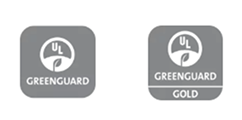WELCOME TO COMPAC'S HEALTH AND SAFETY AREA
Within the framework of COMPAC® principles, health and safety are a priority. In this sense COMPAC® encourages a safe working environment, promoting the highest standards of health and safety to all employees, suppliers, distributors, manufacturers, stonemasons, installers or customers.
COMPAC® products, as finished products, do not present any risk or health hazard in transportation, shipping or when used by the final consumer. However, due to the silica content in some of the products, the manufacture, processing, installation or handling of these products generates respirable crystalline silica dust (CRS).
The presence of CRS in a work environment requires strict compliance with safety measures, in accordance with current health and safety regulations.
With the firm purpose of sharing health and safety information, COMPAC® makes available to professional collaborators who work with, handle, prepare, process and install COMPAC® products various resources and documents with safety information and recommendations (hereinafter, “The Safety Documentation”) that you will find on this website, including Safety Data Sheets, Safety Labels, Good Practice Guide and other information and resources of interest in relation to health and safety.









